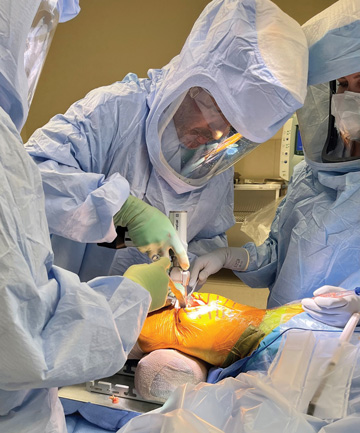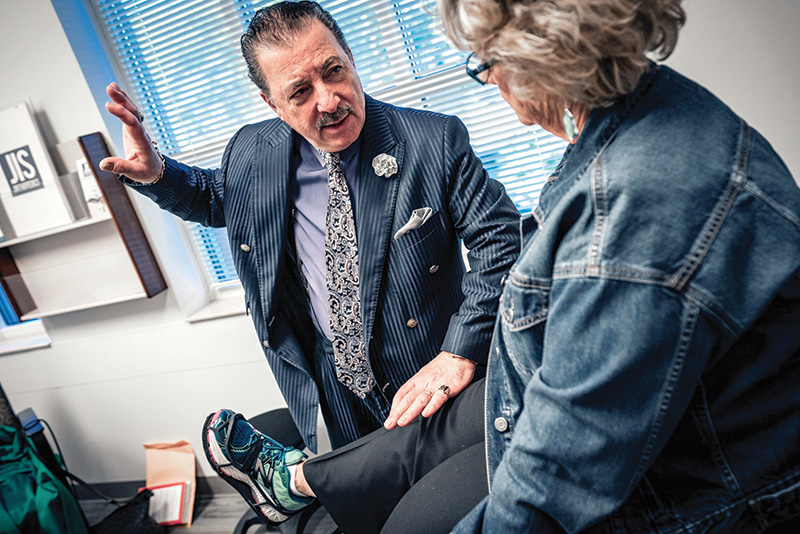Universal buy-in, comprehensive education and a methodical approach pay dividends for Bayou Region Surgical Center.
 BEYOND THE OR The implications of adding a total knee service line reach far beyond excellent execution of the operative procedure itself. | OrthoTennessee
BEYOND THE OR The implications of adding a total knee service line reach far beyond excellent execution of the operative procedure itself. | OrthoTennessee
For the multispecialty, physician-owned Bayou Region Surgical Center in Thibodaux, La., adding total knees to its existing orthopedics line last year was a natural development. “We have a very strong orthopedic group, and our doctors are very good at patient-centered approaches,” says Administrative Director Serena Ledet, RN, BSN. “The surgeons were able to discharge total knee patients on the same day at tertiary hospitals, so they wanted to make the move here.”
So far, so good, she says, as the line is already more profitable with higher volumes than projected. But a lot of work was required before the first total knee patient entered the ASC’s doors. Here are some of the preemptive steps that took its total joints program from tantalizing idea to successful reality.
Patient population analysis. “We started by looking at our patient population to be sure we would have patients who would be healthy enough to have a total knee procedure and go home the same day,” says Ms. Ledet. The launch team then developed clinical criteria patients needed in order to have their procedures performed at the ASC, including diabetic status, A1C below a certain level, previous strokes, history of falls, BMI and more.
Post-op physical therapy. Because the group of surgeons was already affiliated with a physical therapy group, they wanted their preferred physical therapists to be on site to help patients ambulate postoperatively. Bayou Region Surgical Center fulfilled the request.
Capital purchases. Because Bayou Region already did ortho cases, many supplies and instruments were already on hand, but some additional equipment was still needed. “We purchased instrument sets,” says Ms. Ledet. “We contracted with a vendor for implants. We purchased drills. We purchased larger stretchers so the patients would be more comfortable, because their recovery times are a little longer than our typical patients.”
Staff training. Although new staff wasn’t necessary to add total knees, and many providers on staff had done total joints in the past, training on the procedure was still necessary to get everyone on the same page. “We did a lot of training on spinal anesthesia,” says Ms. Ledet. “We already had experience with many different types of blocks, but we did refreshers.” The ASC’s pre-op nurses were trained on how to educate patients prior to surgery, and its recovery nurses were joined by the physical therapists for training on the post-op process. Representatives from one total joints company visited and went through an entire total knee procedure step-by-step twice before the ASC scheduled its first patient.
After eight months of planning, purchasing and staff education, the ASC slowly activated its total knees line. “We slowly ramped up the volume, because not only did staff need to become comfortable with the procedures, but also the surgeons had to be comfortable with doing them here,” says Ms. Ledet. “We carved out more time in the OR and in recovery and had extra staff on hand to get the program going and make sure we didn’t have any hiccups.”
Ms. Ledet says the key to the line’s successful activation is a testament to the involvement and commitment of the ASC’s surgeons and staff. “They were willing to make the transition, educate themselves and be open to the education we offered on starting a total joints program,” she says. “All our surgeons gave input on patient criteria and supported slowly building the service line instead of overwhelming the staff.”
.svg?sfvrsn=be606e78_3)


.svg?sfvrsn=56b2f850_5)